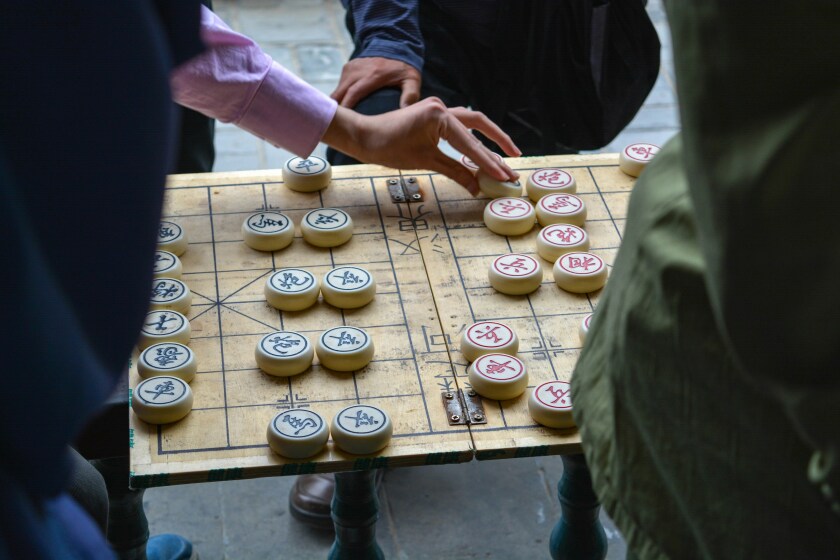Since the fourth revision of the Patent Law of the People’s Republic of China in 2020, the implementation rules and examination guidelines of the revised law were finally settled in December 2023. The newly revised Implementation Rules of the Patent Law of the People’s Republic of China (the Implementation Rules) and the Patent Examination Guidelines (the Examination Guidelines) came into effect on January 20 2024.
This article outlines the key revisions within the updated Implementation Rules and Examination Guidelines.
1 Examination on supportive issues
In this revision, when judging whether claims are supported by the description, the examiner should have "sufficient suspicion", which means that the examiner’s conclusion should be fully reasonable and they should not directly draw an assertion conclusion without any analysis.
2 Examination on novelty
A new case of non-prejudicial disclosures is added in this revision; that is, an invention-creation for which a patent is applied for does not lose its novelty if it is first exhibited for the purpose of public interest during a state of emergency or extraordinary circumstances within six months before the filing date. If this happens, the applicant should make a declaration or statement and submit certifying materials.
3 Examination on inventiveness
3.1 The examination principle on obvious inventiveness of a utility model
The updated Implementation Rules and Examination Guidelines provide clarification regarding the preliminary examination of utility models. They specify that examiners should assess whether the utility model application obviously lacks inventiveness.
Furthermore, it is clarified that the principle guiding the inventiveness examination of utility models during a preliminary examination aligns with that of the inventiveness examination during an invalidation procedure for utility models. Generally speaking, one or two prior art references can be cited to evaluate the inventiveness of utility models, and for those formed by "simple superposition" of prior art, more prior arts can be cited to evaluate a model’s inventiveness when needed.
3.2 The examination principle of dependent claims
The revised Examination Guidelines now stipulate that "the inventiveness of the dependent claim of the independent claim will not be examined generally." This revision was made because in cases where the technical solution of the dependent claim cannot enjoy priority, the dependent claim might not possess inventiveness, even if its independent claim does, due to the redetermination of the filing date of the technical solution.
3.3 The examination principle of inventiveness for inventions
The revision of the Examination Guidelines clarifies that the closest prior art serves as the basis for determining whether an invention possesses prominent substantive features. Specifically, "the prior art related to the technical problem to be addressed by the invention is given priority."
Consequently, according to the revised guidelines, when selecting the closest prior art, priority must be given to prior art within the same, or a similar, technical field and related to the technical problem addressed by the invention.
This means that apart from considering identical or similar technical fields, it is also necessary to consider whether the purpose of the invention is technically related. For instance, if the technical problem explicitly stated in the prior art matches or resembles the technical problem addressed in the current application, or if, though not explicitly recorded, it is implicitly recognised by those skilled in the art, it should be considered.
By enhancing the basis for assessing inventiveness, the risk of ‘ex post facto analysis’ by examiners during the examination process can be avoided as much as possible.
In the course of an invention examination, it is possible that the technical problem actually addressed by the invention differs from the one recorded in the description, based on the closest prior art identified by the examiner. The principle for redetermining the technical problem actually solved by the invention was outlined in the Examination Guidelines prior to the revision. It stated that "any technical effect of the invention can serve as the basis for redetermining the technical problem, as long as those skilled in the art can derive the technical effect from the contents described in the application."
However, as this principle did not specify how to judge the technical problems actually solved by a technical solution with equivalent technical effects and no "superior technical effect", the revised Examination Guidelines now clarify this as a special case. They state that "when all technical effects of the invention are equivalent to the closest prior art, the redetermined technical problem is to provide an alternative technical solution different from the closest prior art."
Furthermore, it is emphasised that the redetermined technical problems should align with the technical effects achievable by the distinguishing features of the invention. They should not be identified as the distinguishing features themselves, nor should they include guidance or hints regarding the distinguishing features.
These revisions are beneficial for standardising examination criteria, enhancing the quality of examinations, and ensuring proper protection for inventions-creations that genuinely contribute to the prior art.
4 Examination strategies of a re-examination
4.1 Interlocutory examination in re-examination
Prior to this revision, the original examination department that made the decision of rejection should have conducted the interlocutory examination before the Patent Re-examination Board initiated the examination. This revision expands the subject of interlocutory examination to "the examination department that undertakes interlocutory examination"; that is, the substantial examination department other than the original one can also conduct the work of interlocutory examination.
Thus, when a department or examiner other than the original one conducts the interlocutory examination, it may have a different understanding of the technical solution and/or the re-examination request of the patent application, then draws a conclusion different from the rejection decision, which enhances the fairness of the examination.
4.2 The scope of examination ex officio in a re-examination
On the basis of the original examination ex officio, four types of examination ex officio situations are added in the revised guidelines:
Examination of the principle of good faith and credibility; for example, abnormal application. According to the relevant provisions in China, abnormal application includes multiple patent applications that are obviously the same, or are essentially formed by a simple combination of features and elements; applications that contain fabricated or forged content; and those that are mainly randomly generated using a computer.
The panel can voluntarily examine defects of the same nature as those in the rejection decision; for example, if the rejection decision indicates that some claims do not possess inventiveness, the panel has the right to add the objections/rejections that other claims do not possess inventiveness.
The panel can indicate other obvious substantial defects that are not indicated in the rejection decision; for example, practical defects, unclearness, or being unsupported by the description.
The panel has the right to change the use of reference documents or evidence; for example, it can change the most related prior art documents, or it can ignore certain evidence cited in the substantive examination if it is considered inappropriate.
4.3 The type of re-examination decision
In the previous guidelines, there were two types of re-examination decisions: maintaining the rejection decision and revoking the rejection decision. After the revision, a re-examination decision of "rejecting the request for re-examination" was added. For example, if the panel adds opinions on obvious substantial defects that are not indicated in the rejection decision, and the statement or the amendments cannot persuade the panel, then a re-examination decision of rejecting the request for examination can be issued.
5 Examination strategies of invalidation
5.1 The patentee renounces the patent
According to the previous provisions, a patentee can only renounce some of the claims or some of the multiple designs; in the revised guidelines, the patentee is allowed to renounce all the claims or all the designs, provided that it does not infringe the legitimate rights and interests of others and the public interest.
5.2 Multiple invalidation procedures for the same patent right
According to the previous guidelines, if the invalidation decision declares the patent right invalid in whole or in part, and the party concerned fails to institute legal proceedings, a subsequent invalidation request for this patent right will not be accepted.
After this revision, as long as the patent right is declared partially or wholly invalidated, and the invalidation decision has not been revoked by the court, the subsequent invalidation request for the same patent right will not be accepted. In other words, the patent right has been invalidated by the earlier examination decision, and there is no basis for examination at this time. Even if the invalidation decision is in the process of litigation, a later request for invalidation will not be accepted, to avoid long waiting periods for the petitioner.
5.3 The examination scope for invalidation
After this revision, the panel in an invalidation procedure can examine not only the contents in the request for invalidation but also other aspects that are obviously not in conformity with the relevant provisions of the Patent Law and its Implementing Regulations, such as that the patent is not in conformity with the principle of good faith that is not mentioned in the request for invalidation.
The reason for such revision is that in an invalidation procedure, if the panel only examines the claims of the parties involved, the patent right with defects will continue to exist, which will lead to the prohibition of the technology that could have been implemented by anyone; if anyone wants to invalidate the patent, they have to initiate an invalidation procedure again and pay additional costs.
5.4 Amendments to claims in an invalidation procedure
This revision adds restrictions to amendments of the claims; that is, "amendments should be made regarding the defects in the request of the invalidation or the defects pointed out by the panel". In other words, if the patentee makes an amendment unrelated to the defects pointed out by the panel, it will not be accepted. Of course, rewriting claims is still not permitted in an invalidation procedure. This is for the sake of fairness.
5.5 Simplifying the procedures for extraterritorial evidence.
The previous guidelines stipulated that all extraterritorial evidences need to be notarised and authenticated, but in this revision, only notarisation by the host country or documents meeting treaty procedures are needed. Moreover, there is no need to go through the certification procedures before the embassy for extraterritorial evidence that has been accepted by effective court decisions, administrative decisions, or arbitration awards.
6 Final thoughts on the revisions
The above are the main parts of the examination strategies under the recent revision provisions in China. On the whole, the preliminary examination of utility models tends to be strict, the standards for the examination of inventiveness for inventions are further clarified and improved, and the examination scopes in the re-examination stage and the invalidation stage by the panel have been expanded to improve fairness and efficiency.











